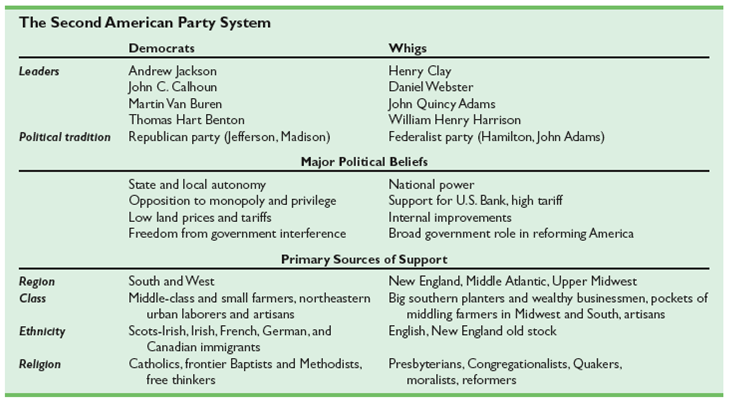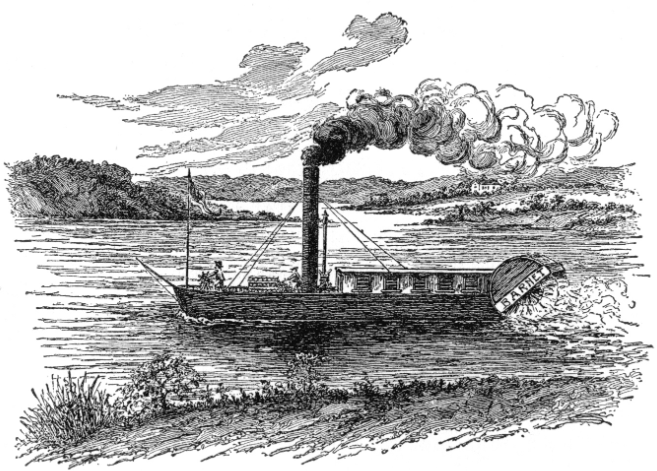Jed Quiaoit
S
Sally Kim
AP US History 🇺🇸
454 resourcesSee Units
A New Republic
Domestic: Party Time!
The early history of the United States was marked by a series of political divisions, as different ideas about government led to the emergence of various political parties. 🎉
During the First Party System, which lasted from roughly 1792 to 1824, the country was divided between the Federalists, who advocated for a strong central government and a broad interpretation of the Constitution, and the Democratic-Republicans, who emphasized states' rights and a strict interpretation of the Constitution.
The Second Party System, which lasted from 1824 to 1854, saw the rise of the Whigs and the Democrats, who held competing views on issues such as government intervention in the economy, national expansion, and slavery.

Source: Blendspace
International: Spreading the Word of the U.S.
At the same time, the United States was pursuing an increasingly aggressive foreign policy, aimed at increasing trade and expanding the country's global influence. While the country faced challenges, such as the War of 1812, it was also successful in other areas, such as the implementation of the Monroe Doctrine, which declared that European powers could not interfere in the affairs of the Americas. 🧍
As the country continued to grow and expand, it acquired new territories through various means, such as the Louisiana Purchase and the Mexican Cession. These acquisitions greatly increased the size of the United States and helped shape its character.
By the mid-19th century, the country was undergoing significant changes as a result of the Market Revolution, which led to the growth of a large middle class and the spread of new economic and social ideals. This, in turn, gave rise to the Second Great Awakening, a wave of religious revivalism that swept across the country and sparked a series of reform movements. These movements brought new opportunities and freedoms to minority and religious groups, such as slaves, women, and Quakers, who had previously been marginalized and oppressed.
🎥 Watch: AP US History - Writing in Period 4
The Market Revolution's Acceleration of American Growth
The Market Revolution was a period of economic growth and transformation in the United States in the early 19th century. The revolution was driven by innovations in transportation, agriculture, and commerce that had a profound impact on the American economy and society. 🌾
The development of transportation systems such as the steamboat, the canal, and the railroads created new opportunities for commerce and helped to connect far-flung regions of the country. This in turn led to an increase in manufacturing and agricultural production, as goods could be transported more quickly and efficiently.

Source: Emerging America
The Market Revolution had significant effects on American society, particularly on the lives of workers, gender and family relations, and regional identities. It brought about new forms of labor, as workers flocked to urban areas to work in factories and other industries. Women, who had previously been limited to domestic work, also began to find new opportunities in the workforce, though they often faced significant challenges, including low wages and limited job opportunities.
The Market Revolution also shaped settlement and trade patterns, as new transportation systems facilitated the movement of people and goods between different regions of the country. This helped to unify the nation, while also encouraging the growth of distinct regional identities. The rise of the market economy was a catalyst for significant social and economic changes, transforming the way that people lived, worked, and interacted with each other. 🤝
Timeline
1800 - Election of Thomas Jefferson, Gabriel’s Rebellion, Revolution of 1800
1803 - Marbury v. Madison, Louisiana Purchase
1808 - Election of James Madison
1811 - Battle of Tippecanoe
1812 - War of 1812
1814 - Treaty of Ghent
1815 - State of the Union Address
1817 - Election of James Monroe, Era of Good Feelings
1819 - Panic of 1819
1820 - Missouri Compromise
1824 - Election of John Quincy Adams
1829 - Election of Andrew Jackson
1831 - Turner’s Rebellion
1837 - Panic of 1837, Election of Martin Van Buren
1838 - Trail of Tears
1841 - Election of William Henry Harrison (John Tyler)
1848 - Seneca Falls Convention
Browse Study Guides By Unit
🌽Unit 1 – Interactions North America, 1491-1607
🦃Unit 2 – Colonial Society, 1607-1754
🔫Unit 3 – Conflict & American Independence, 1754-1800
🐎Unit 4 – American Expansion, 1800-1848
💣Unit 5 – Civil War & Reconstruction, 1848-1877
🚂Unit 6 – Industrialization & the Gilded Age, 1865-1898
🌎Unit 7 – Conflict in the Early 20th Century, 1890-1945
🥶Unit 8 – The Postwar Period & Cold War, 1945-1980
📲Unit 9 – Entering Into the 21st Century, 1980-Present
📚Study Tools
🤔Exam Skills
👉🏼Subject Guides
📚AMSCO Notes

Fiveable
Resources
© 2025 Fiveable Inc. All rights reserved.